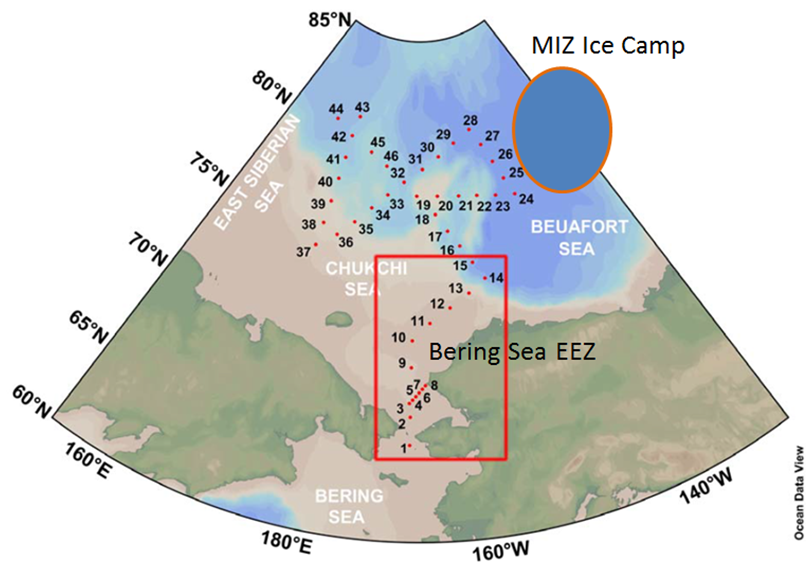In August the South Korean icebreaker Araon sailed into the northern region of the Beaufort/Chukchi Sea region of the Arctic Ocean. This scientific cruise, a collaborative effort between ONR’s Marginal Ice Zone programme (USA) and the Korea Polar Research Institute (KOPRI), aims the further our understanding of the changing Arctic marine environment.
At about 77.4N 146.2W Araon moored to an ice floe (known as the MIZ ice camp) and began the deployment a large number of autonomous platforms. These platforms will provide continuous measurements of the atmospheric, sea ice and ocean properties over the coming months. Some of these autonomous platforms form part of the pan-arctic array of instrumentation within the ICE-ARC programme. These are the SATICE and SIESTA systems.
 Potential cruise track of Aaron 2014. Courtesy H. Wang
Potential cruise track of Aaron 2014. Courtesy H. Wang
SATICE: SATICE is the first high-rate, high-precision, continuous GPS positioning experiment on sea ice in the Arctic Ocean. The SATICE GPS buoys include additional geophysical measurements such as ocean water pressure, ocean surface salinity, atmospheric pressure, snow-depth, air-ice-ocean temperature profiles, photographic imagery, and others, enabling determination of sea ice drift, freeboard, weather, ice mass balance, ocean tides, and instantaneous sea-level height.
SIESTA: SIESTA is an air droppable buoy that measures the dynamics of sea ice. The additional instrumentation on these buoys include barometer for atmospheric pressure, air temperature and humidity.


